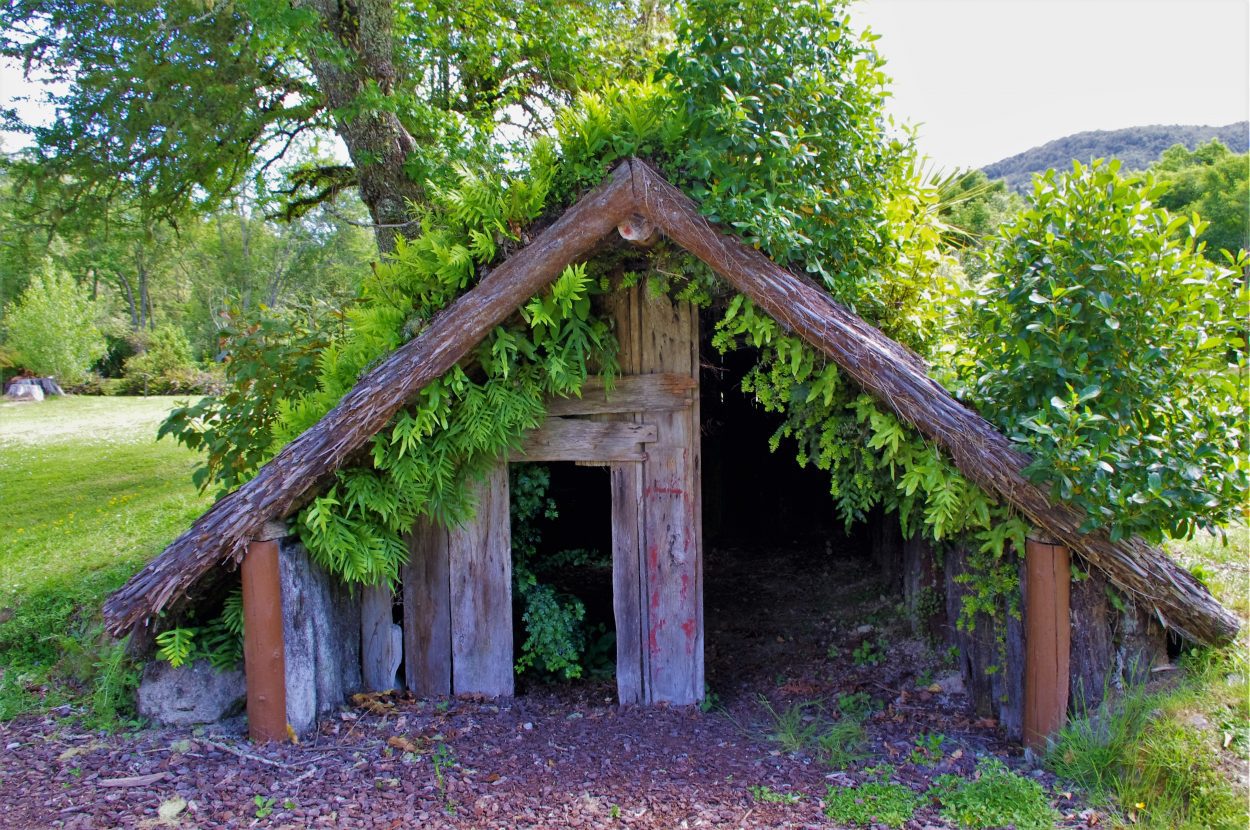Te Wairoa was a Tuhourangi Māori and European settlement that was destroyed and buried by the eruption of the Mount Tarawera volcano.
Te Wairoa was founded in 1848 in a valley at Lake Tarawera by the Revd Seymour Mills Spencer as part of the Church Missionary Society (CMS) drive to establish mission stations throughout New Zealand.
Spencer had previously been ordained as the Deacon for the district of Taupo in 1843, but moved from Taupo to Rotorua after a scandal purported over advances by Spencer towards a Māori girl. Spencer and his wife then constructed a European-styled community mission station at Te Wairoa with the help of local Māori, but was suspended from the CMS for impropriety towards a Māori woman.
The settlement takes its name from a stream that meanders through the valley and was planned to model a typical English village with an amalgam of traditional Māori architecture. The whares or houses were laid out in streets, each having their own carefully fenced 100 square metre gardens.

Te Wairoa developed into a major tourist attraction during the 1860’s onwards, providing guides to visit local geothermal springs and the Pink and White Terraces, reportedly the largest silica sinter deposits on earth. Most of the commercial enterprises in the settlement were controlled and owned by Europeans who constructed two large hotels, a blacksmiths and store houses.
Visitors were entertained in the Hinemihi meeting house by Māori women who performed traditional dance concerts, although contemporary reports describe the performances as “vulgar and shocking.”
In 1886, the Mount Tarawera volcano erupted that resulted in a pyroclastic surge that obliterated several villages and the Pink and White Terraces. At the time, around 120 Tuhourangi and 15 Europeans were living in Te Wairoa, although a number of Māori from other villages were also at Te Wairoa attending a tangi or Māori funeral.
Many inhabitants died from falling debris and asphyxiation whilst trying to flee, whilst other villagers took shelter in their homes which became buried under volcanic material.
One of the first reporters at the scene after the eruption wrote: “Many of the smaller whares withstood the impact of the eruption. Nearly all the large houses were destroyed. There were probably 70 houses at Wairoa and not ten remain, of which half are not worth repairing.”
Te Wairoa still continued to attract tourists who wanted to see the “Buried Village” and the altered landscape that was described as “the new thermal wonders”. The surviving Hinemihi meeting house was sold to Governor-General William, the fourth Earl of Onslow, and can now be seen at the Earl’s country seat of Clandon Park, England, now managed by the National Trust.
Header Image Credit : Symac





